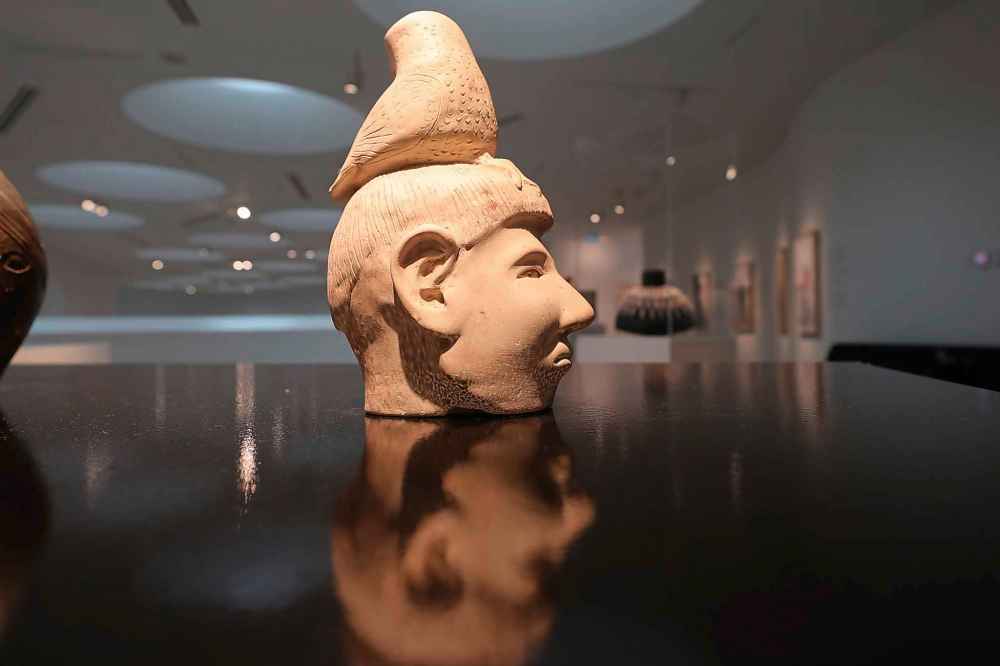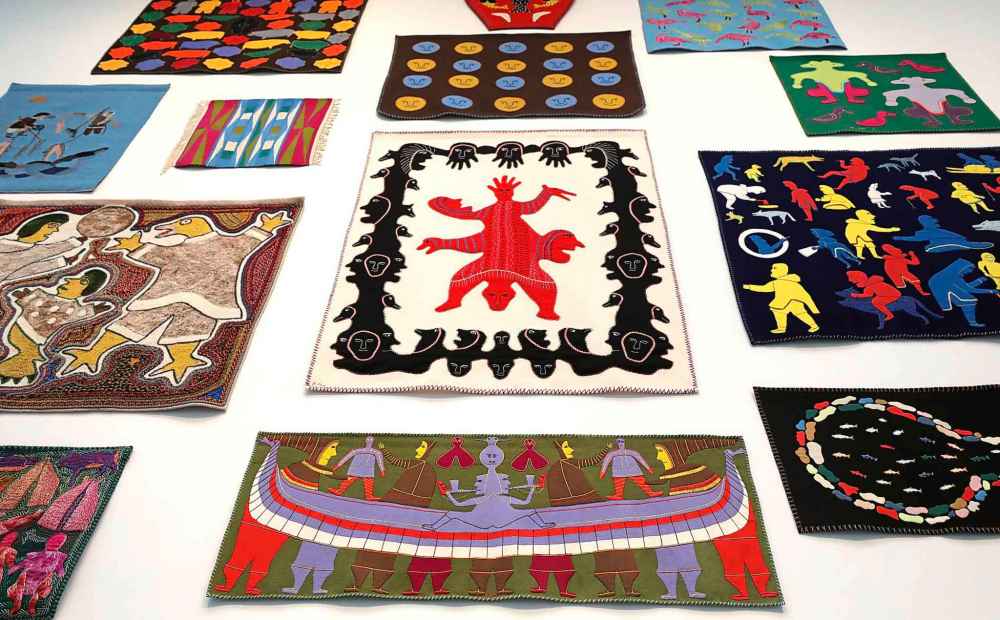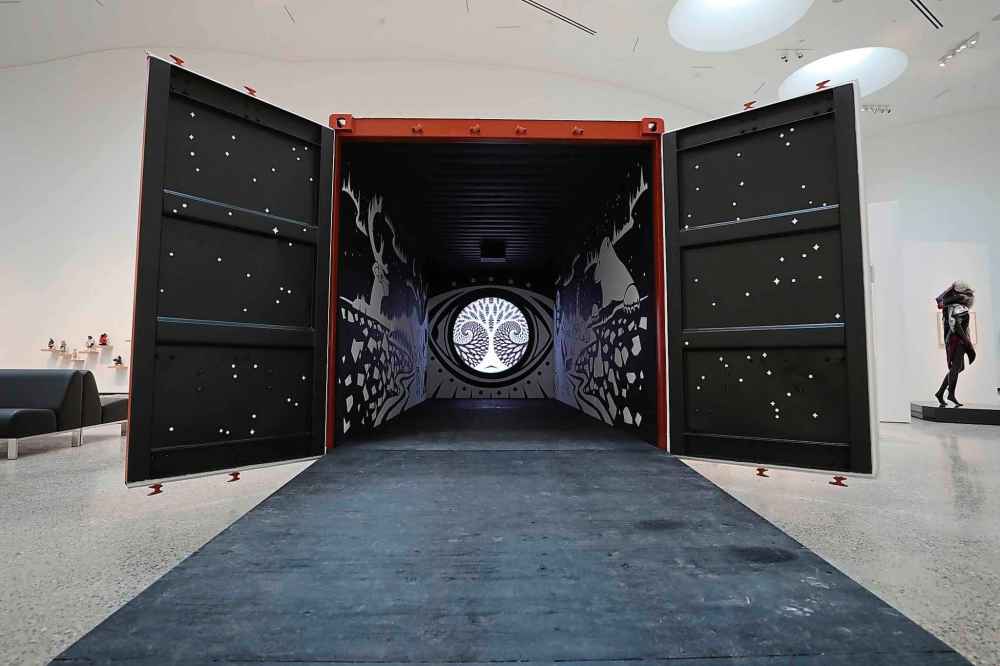Opening the drawers Qaumajuq ushers in new era for Inuit artists and their previously stored-away creations
Read this article for free:
or
Already have an account? Log in here »
To continue reading, please subscribe:
Monthly Digital Subscription
$0 for the first 4 weeks*
- Enjoy unlimited reading on winnipegfreepress.com
- Read the E-Edition, our digital replica newspaper
- Access News Break, our award-winning app
- Play interactive puzzles
*No charge for 4 weeks then price increases to the regular rate of $19.00 plus GST every four weeks. Offer available to new and qualified returning subscribers only. Cancel any time.
Monthly Digital Subscription
$4.75/week*
- Enjoy unlimited reading on winnipegfreepress.com
- Read the E-Edition, our digital replica newspaper
- Access News Break, our award-winning app
- Play interactive puzzles
*Billed as $19 plus GST every four weeks. Cancel any time.
To continue reading, please subscribe:
Add Free Press access to your Brandon Sun subscription for only an additional
$1 for the first 4 weeks*
*Your next subscription payment will increase by $1.00 and you will be charged $16.99 plus GST for four weeks. After four weeks, your payment will increase to $23.99 plus GST every four weeks.
Read unlimited articles for free today:
or
Already have an account? Log in here »
Hey there, time traveller!
This article was published 19/03/2021 (1709 days ago), so information in it may no longer be current.
For years, only shadows knew much of the Inuit art at museums in Canada and around the world.
Expect Qaumajuq, the Winnipeg Art Gallery’s new building devoted to Inuit art, artists and curators, to change that.
“I thought it was a perfect idea, because these museums — not only the Winnipeg Art Gallery — you go into the museum basements, there are drawers and drawers and drawers and drawers of Inuit art,” says filmmaker Zacharias Kunuk, who is from Igloolik, Nunavut.
“I’ve gone to museums from Ottawa, New York, Philadelphia where they have Inuit artifacts. I’m amazed to find in these museums what my ancestors had time to do.”

The drawers at the Winnipeg Art Gallery have been opened, and one glance at the thousands of stone carvings on display in Qaumajuq’s Visible Vault reveals the old days and old ways of approaching Inuit art are over.
“No one has actually created a centre like this and it is way overdue,” says Pat Feheley, who runs Feheley Fine Arts, a downtown Toronto gallery that is devoted to showing and selling art from the Canadian Arctic.

Feheley, who until just recently had been on the Inuit Art Foundation’s board, has been making regular trips to the North every year since the late 1960s. She’s become one of Canada’s leading experts on Inuit artists and the works they create, and played a role in Qaumajuq’s capital fundraising campaign.
“Much of (the WAG’s) collection will be on view, which will be better because there was always just a small portion of it on view, and that’s a problem with the Art Gallery of Ontario, the National Gallery, Musée des beaux-arts de Montréal, where there’s one gallery or they’ll have a special exhibition,” she says.
“Obviously they are large museums and they have European, Canadian and other Indigenous (exhibitions).”

Qaumajuq has also upped the ante for other museums and curators.
‘‘For me, Qaumajuq represents a long-awaited major leap forward in how we exhibit and understand Inuit art in the South,” writes Christine Lalonde, the National Gallery of Canada’s associate curator of Indigenous art in an email from Kinngait, Nunavut.
“I think it’s fair to say that, despite the committed and best efforts of many people working with Inuit art, exhibitions, writing, collecting, in other words our whole understanding of art by Inuit, has been somewhat random and partial.”

Inuit artists, curators and leaders are taking a greater role in how their works are displayed. The Inuit Art Foundation now has an all-Inuit board of directors, and four Inuit curators, assisted by curators and staff at the WAG, created INUA, Qaumajuq’s inaugural exhibition.
Indigenous curators have put together exhibitions before but INUA takes Indigenous involvement in the process a step further, Feheley says.
“The difference here is the knowledgeable Indigenous people from all four parts of the Inuit Nunangat were involved from the very early point, so they’re not coming into a generalized space,” she says. “They actually helped create the space.”

Qaumajuq also provides an opportunity for the Nunavut territorial government to show its 7,000-plus artworks, which are on loan to the WAG until it builds its own climate-controlled museum.
In the meantime, the WAG is offering travelling exhibitions to the North and is digitizing the collection so it can be viewed around the world by anyone with an internet connection.
“For me, what’s important is access to collections, and that’s one of the things I love about Qaumajuq, is that they’re bringing out so much in the Visible Vault,” says Krista Ulujuk Zawadski, Nunavut’s curator for Inuit art and one of INUA’s curators.
“This jewelry installation, the jewelry has been siting in collections since the 1970s and that just kind of irks me. It makes me think, ‘Why are they sitting in boxes in storage when Inuit or other artists could look at it and take inspiration from this type of work?’”
alan.small@freepress.mb.ca Twitter:@AlanDSmall

Alan Small
Reporter
Alan Small was a journalist at the Free Press for more than 22 years in a variety of roles, the last being a reporter in the Arts and Life section.
Our newsroom depends on a growing audience of readers to power our journalism. If you are not a paid reader, please consider becoming a subscriber.
Our newsroom depends on its audience of readers to power our journalism. Thank you for your support.

